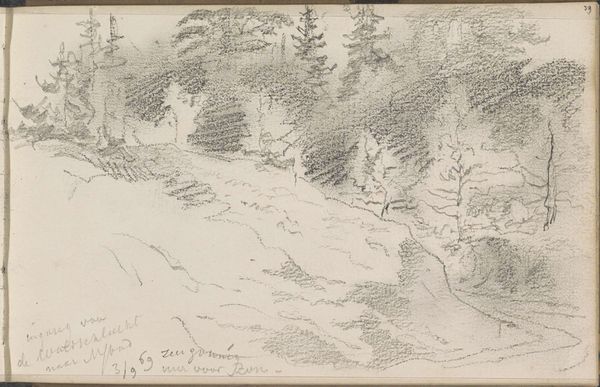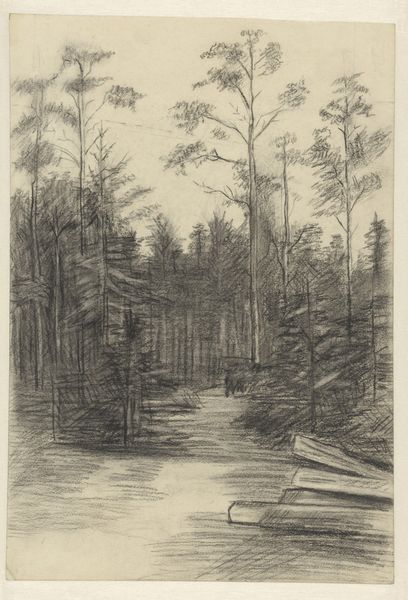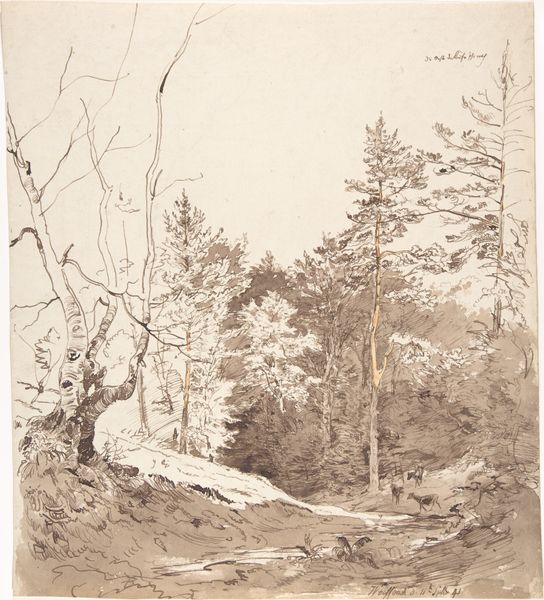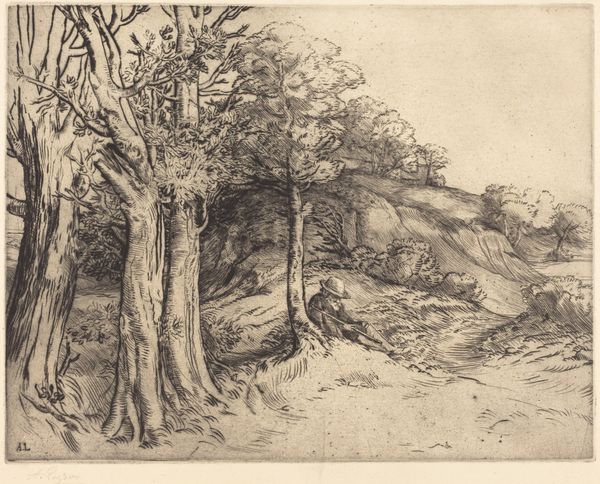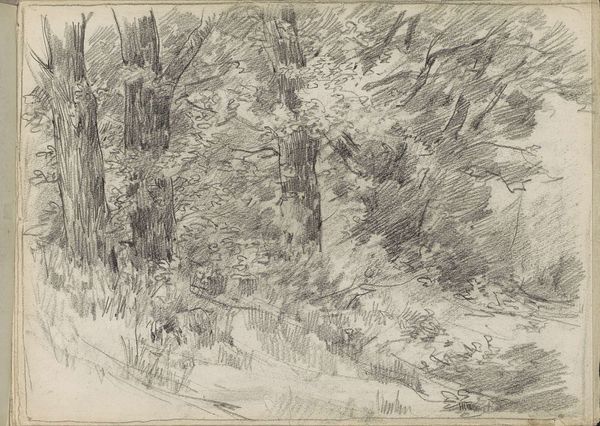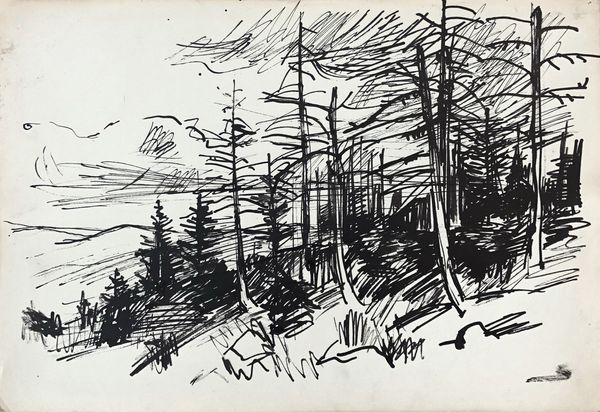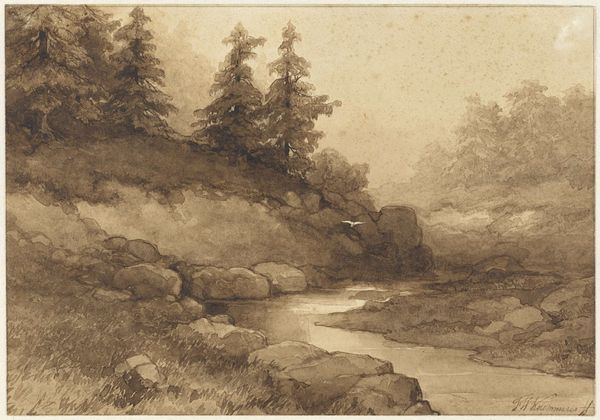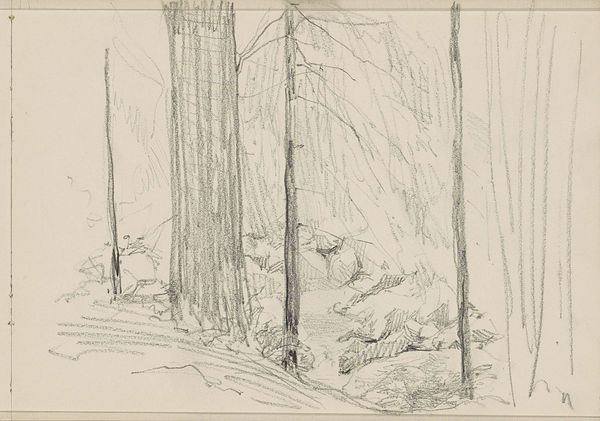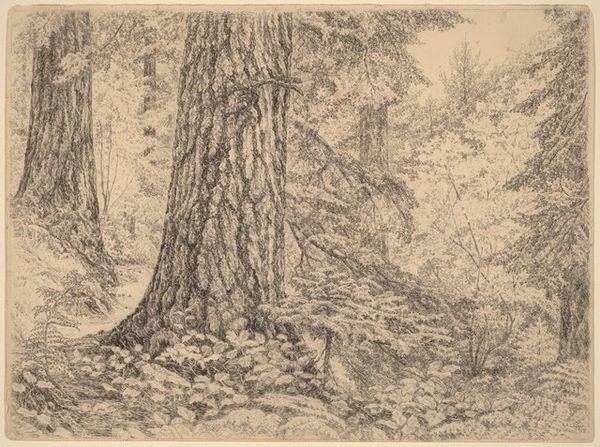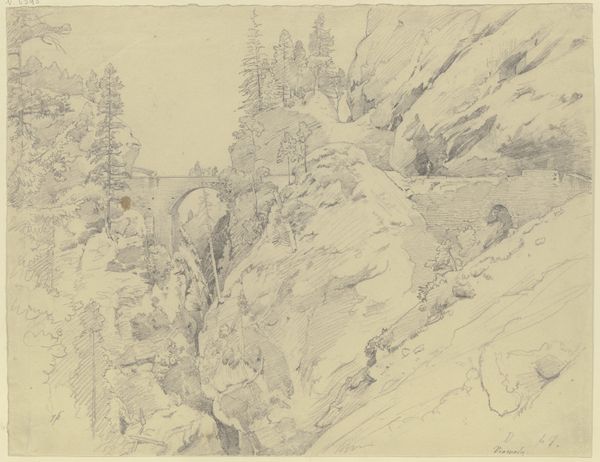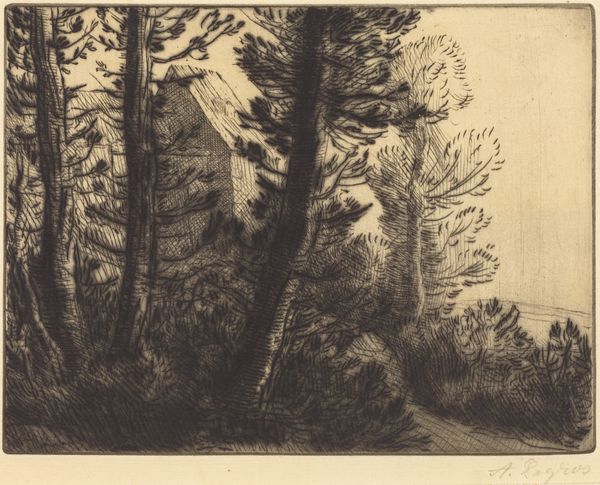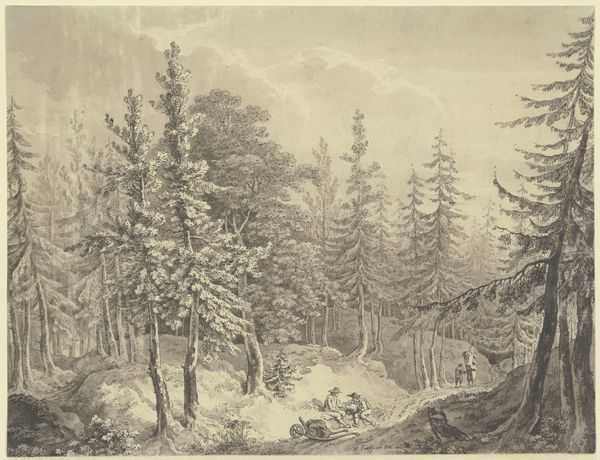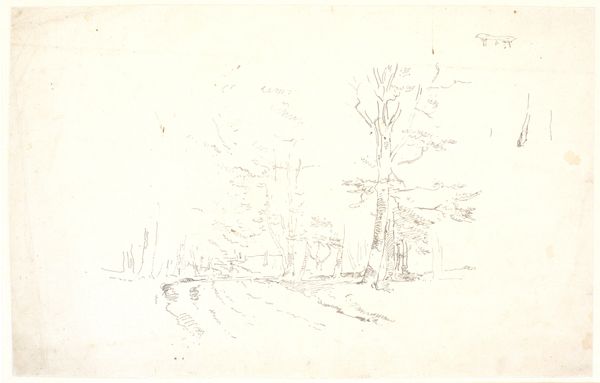
drawing, paper, ink
#
drawing
#
landscape
#
paper
#
ink
#
romanticism
#
line
#
realism
Dimensions: 205 mm (height) x 304 mm (width) (bladmaal)
Curator: Johan Thomas Lundbye created this drawing, "Hulvej gennem en granskov," or "Hollow Road through a Spruce Forest," in 1848. It's rendered in ink on paper and currently resides at the SMK in Copenhagen. What strikes you first? Editor: It’s incredibly dense, a thicket of vertical lines fighting for space. Yet there’s a stillness, a quiet hum resonating from the trees, like a held breath. It makes me want to pause. Curator: Lundbye’s attention to the individual trees, while maintaining a cohesive forest scene, speaks volumes about Romantic-era concerns. This emphasis shows both observation of, and emotional response to nature. Look at how the light filters—or fails to—through the dense canopy. Editor: Yes, that light…it’s more suggested than present, isn't it? There's something melancholy about that. Maybe it's because it is just line work. Also, what a masterful use of such a limited medium; he conjures so much texture just through line variations! The scrubby undergrowth is so different from the smooth bark of the pines. Curator: And that undergrowth—it’s a direct record of his labor. The physical act of rendering each needle and twig matters. It roots the drawing in a specific time and place but also implies the time and labour required for resource extraction and logging in similar landscapes. There are two seemingly opposing but ultimately harmonious visual approaches. The forest becomes commodified and available, in the cultural eye. Editor: Ah, now that's a darker reading. But I also see Lundbye trying to understand the relationship between humans and nature in a romantic and maybe a slightly ominous way. Curator: Perhaps. And as a study, the artwork allows insight into 19th century drawing tools, and modes of art-making that facilitated landscape appreciation in Danish culture. The availability of materials and methods meant these sorts of images became relatively popular among the burgeoning middle classes. Editor: So, both a specific location captured with incredible attention to detail, and also, simultaneously, a comment on production, consumption, and seeing, then? I think that is a very compelling read on this quiet landscape! Curator: Precisely. Considering Lundbye's careful selection of materials and subject, his artwork is both document and testament to broader systems of art, nature, and capital. Editor: I love how a seemingly simple drawing reveals such layers! I feel more deeply connected now to that quiet hum, and also how it came to be recorded.
Comments
No comments
Be the first to comment and join the conversation on the ultimate creative platform.
